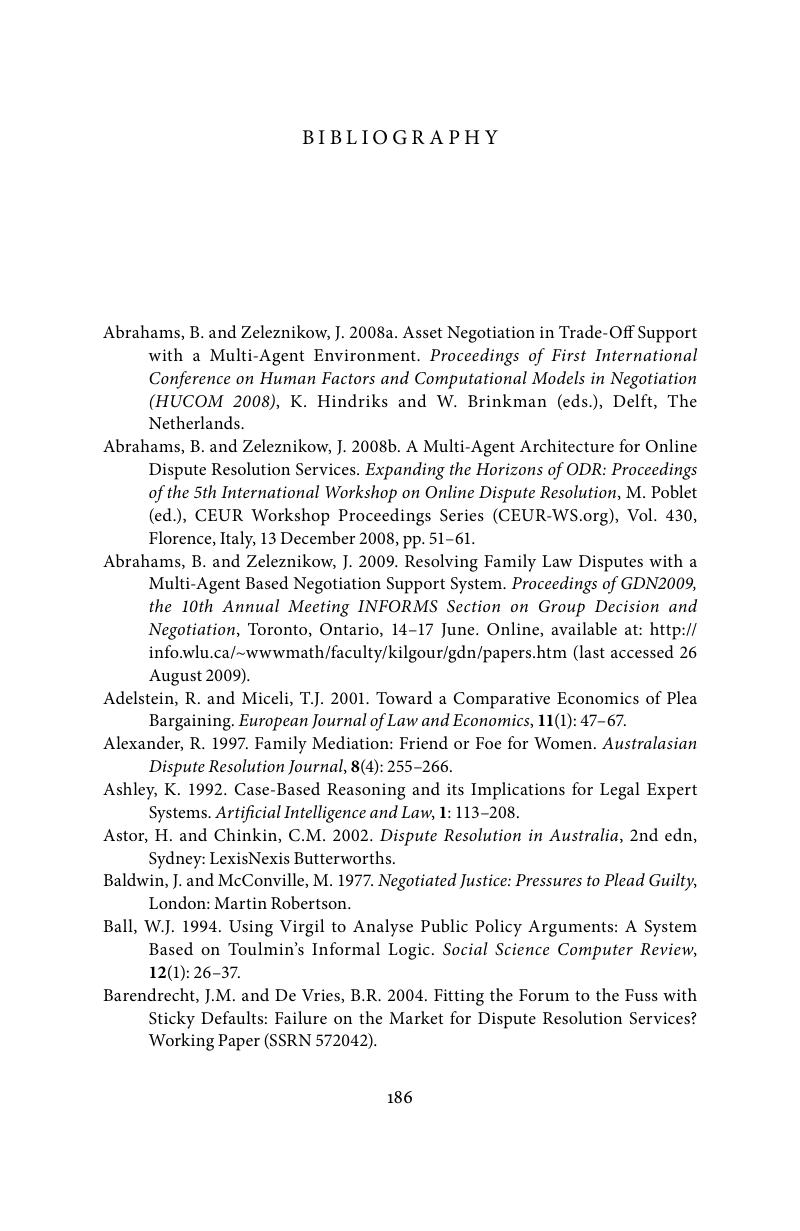Book contents
- Frontmatter
- Contents
- Preface
- 1 Introduction
- 2 Norms for the use of technology in dispute resolution
- 3 Developing dispute resolution processes
- 4 Technologies for supporting dispute resolution
- 5 Advanced intelligent technologies for dispute resolution
- 6 A three-step model for Online Dispute Resolution
- 7 Future prospects
- Glossary
- Bibliography
- Index
- References
Bibliography
Published online by Cambridge University Press: 04 August 2010
- Frontmatter
- Contents
- Preface
- 1 Introduction
- 2 Norms for the use of technology in dispute resolution
- 3 Developing dispute resolution processes
- 4 Technologies for supporting dispute resolution
- 5 Advanced intelligent technologies for dispute resolution
- 6 A three-step model for Online Dispute Resolution
- 7 Future prospects
- Glossary
- Bibliography
- Index
- References
Summary

- Type
- Chapter
- Information
- Publisher: Cambridge University PressPrint publication year: 2010

